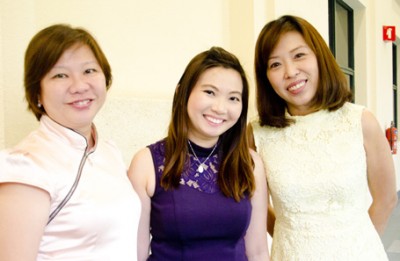Why Singapore’s English Teachers Should Embrace Singlish, Not Fight It
Is it time for Singaporean educators to embrace Singlish as a legitimate learning tool? What the Research […]
Read More
A group of History teachers from Singapore Chinese Girls’ School gave the subject an interesting twist by asking students to reconstruct the lives of people through historical investigation. The teachers shared about their approach at the Redesigning Pedagogy International Conference 2015.
When she realized that she was a descendant of a court official from China, Mrs Shirlene Koh was fascinated. The Humanities Head of Department’s discovery came about when she was in university.
“When I was studying Sociology, I had to find out about my family history to draw a family tree,” Shirlene shares. “So I spoke to my grandfather and found out that my great-great-grandfather was actually an official from the Qing Dynasty!”
Years after she graduated and became a teacher, she was still inspired by how that project had led her to the discovery of her family’s rich history. She decided to re-create that experience for her students in their History classroom in the Singapore Chinese Girls’ School (SCGS).

Students tend to memorize contents for History, rather than understand them, says Shirlene. “But I always ask them, ‘Do you ever memorize Cinderella?’. No one ever does that!” That’s what she wants her students to achieve in History.
Working in a team of three, the teachers brainstormed on ways that might help students manage the large amount of contents they need to know for History, sans rote memorization. “Because content is always tied to assessment – which is a key area of their concern – how do we then enable them with the right skills to manage assessment?”
They decided to let their students immerse themselves in certain historical events so they can relate to it better, and thus, remember the contents better.
“We thought along the lines of deepening the learning from museum visits,” Miss Lena Low, a History teacher, shares. With that in mind, SCGS’s History teachers and students embarked on something new in 2014.
First, the teachers asked students to create a visual timeline of Singapore’s history after a visit to a museum. “By creating a visual timeline,” Lena says, “students are able to understand the concept of context and chronology in a much clearer manner.”
The team of teachers wants their students to take away with them an understanding of the importance of contexts and how they could influence an individual’s decision or life experience in the past.
As part of the historical investigation, students chose two to three key historical events from the many that they saw in a museum and explored their significance. “Later on, they linked it up to how these events actually shaped or affected the life of an individual,” Lena adds.
Once a visual timeline had been created, these students proceeded to the second and main part of the activity – reconstructing the lives of war heroes.
Students tend to memorize contents for History, rather than understand them. But I always ask them, ‘Do you ever memorize Cinderella?’. No one ever does that!
– Shirlene Koh, Singapore Chinese Girls’ School
When you hear the phrase “war hero”, someone like Mr Lim Bo Seng and Lieutenant Adnan Saidi may come to mind. While some students might choose these individuals to focus on for their project, others get more personal with their choice of war heroes – their own grandparents.
“I think it is very different when you work on your personal war hero, rather than to work on public figures because it’s not really the same type of empathy that you can demonstrate,” Lena explains.
Students were told to create a scrap book of their chosen war heroes after their museum visit. “This person’s story has to be based on the development of Singapore as a whole,” she adds.
Their scrap books consisted of three journal entries written from the perspective of the chosen individual, and how that person felt as he or she lived through a particular historical event.

Sandra, a Secondary 3 History student who chose her late grandmother as a war hero, says, “We put ourselves into my grandmother’s shoes so that we were able to understand her live stories and her sentiments. We could empathize with her, and managed to express her life in the best way possible by writing it in the first-person perspective through the scrapbook.”
Her classmate Tian Ci also shares that this had given her the opportunity to understand the older generation and the difficulties they experienced in the post-war era. “Through this learning process, we learned more about families and situations in the past and present,” she notes.
For Shirlene, Lena and their team, having their students not only know, but also understand Singapore’s history like the back of their hands can only mean one thing – History lessons can indeed be like reading Cinderella, so inherently interesting that no memorizing is required!